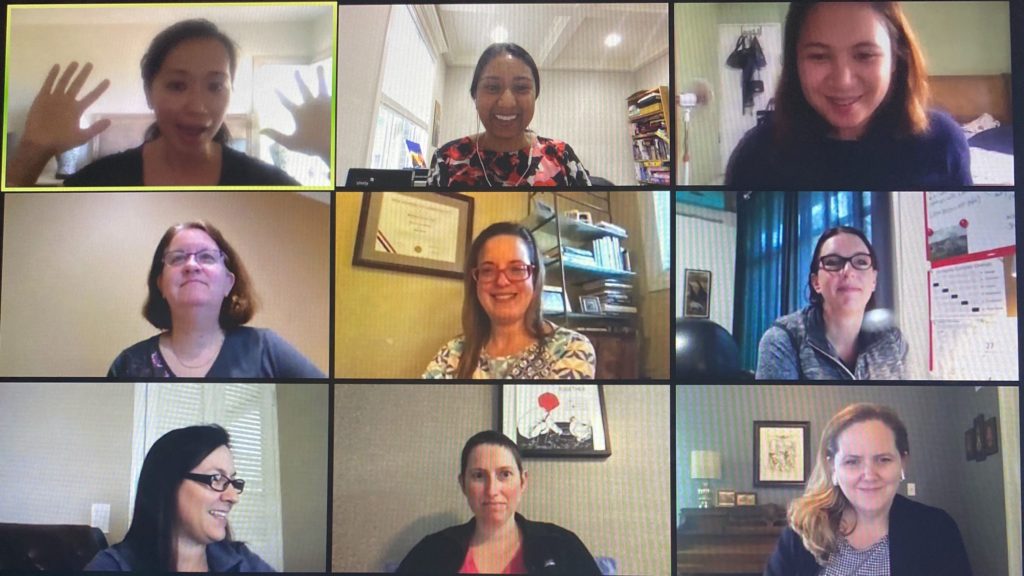March 8, 2018 / Esther Choy

“Women tend to be less comfortable with self-promotion — and more likely to be criticized when they do grab the spotlight,” reported Susan Chira in the New York Times in July 2017, after extensive interviews that included many CEOs and would-be CEOs. Self-promotion is a delicate balance. But the alternative—hoping accomplishments speak for themselves and agonizing in silence until someone notices them—does nothing. As female leaders, we need to become fluent, comfortable and authentic in promoting our own achievements.
And this is where storytelling can help female leaders. Here’s how.
1. Remember stories of you are NOT about you.
Every story is about building connections. As I have argued in my new book Let the Story Do the Work, telling an effective story requires us to think deeply about its intended audiences.
As psychologist Robert Cialdini’s research on social influence has shown, the people we see as “just like us” are the people whose ideas we find most persuasive. So, in telling a story about an achievement, reflect on the experiences that most people share. If your story reminds your listener of a similar experience, you will form an authentic connection that will make your achievements memorable. One of the great, essential shared-experience stories involves overcoming adversity or solving a problem, and that is also a strong set-up for being able to narrate an accomplishment.
For instance, when my colleague Kelly Standing connects with potential clients, she tells the story of how the neighborhood bully once hung her from a tree by her neck and left her for dead. Fortunately, her father saw her and saved her life. Kelly’s dad asked himself, “How will my daughter remember this?” That question shaped his response and helped her to overcome the adversity by seeing herself as strong, rather than victimized. And through it, Kelly learned the power of a good question.
And that’s where she begins to talk about her accomplishments. The power of a good question led her to study in a renowned journalism program. And it has led her to solve clients’ business problems with “a journalist’s curiosity” and the ingenuity she learned from her father. “I help them see possibilities where they might only see pain,” she says.
As self-promotion stories go, Kelly’s is unusually honest and personal. It’s also universal. Although few people have been bullied to this extent, her story speaks to universal fears (for ourselves and our children). And it also brings someone else into the spotlight with her—her father.
2. Choose the right universal element for the context.
What is the context for sharing your achievements? This will shape the type of universal experience you share.
- Interview: Because it is nearly impossible to research your interviewers in advance, share a positive story of overcoming an obstacle. (It’s hard to predict how a negative shared experience will go over.)
- Pitching: Use a shared experience to show you have the strength of character to complete the proposed project.
- Fundraising: Choose a shared experience that underscores why it’s important to give to your cause.
- Meeting a potential client: Select a shared experience that can move from personal to persuasive, illustrating your value (like Kelly’s story).
3. Use Three Acts
An easy accomplishment doesn’t give the listener much to connect with. So reflect on the hurdles that stood in your way, and then shape your success into a three-act drama:
- Act I: After setting the scene, plant a hook that has the central challenge embedded in it.
- Act II: Describe your journey to overcome the main challenge. Shape this section based on what you want to persuade your audience of at the end.
- Act III: Resolve the story and deliver the takeaway—“that’s why I’m here, and that’s why we’re having this conversation.”
4. Seek Feedback
When gauging how the story will come across, nothing is more essential than the feedback of people who are like your target audience. Female leaders can ask our test audiences three key questions:
- What info do you recall? If what stands out to your test audience isn’t what you hoped to convey, craft your message differently.
- How does my story make you feel? The emotion evoked will stay with your audience longer than your exact words.
- What questions do you have? If your story isn’t prompting questions, it isn’t building connections.
Using the same contextual clues and three-act structure, women can also promote each other. This will holistically challenge existing narratives about female leaders and bring the accomplishments of individual women into the spotlight where they belong.
Related Articles
It’s Time for women to tell their stories: A Guest Post from Amanda Hirsch
Mothers Are Leadership Storytellers. Here’s Why.
Don’t miss out on your next opportunity to tell a story. Contact us for business storytelling training! Leadership Story Lab trains and coaches managers in storytelling techniques to help them become more engaging and persuasive communicators. Whether you would like to stand out in the interview process, add punch to a presentation, or make a compelling case for a new initiative, we can help. Schedule a complimentary working session with us today! Esther’s book, Let the Story Do the Work (published by HarperCollins Leadership), is now available!
This article by Esther Choy originally appeared in The Glass Hammer.
Better Every Story
Leadership Transformation through Storytelling
"This is an amazing and insightful post! I hadn’t thought of that so you broadened my perspective. I always appreciate your insight!" - Dan B.
Get Esther Choy’s insights, best practices and examples of great storytelling to your inbox each month.


